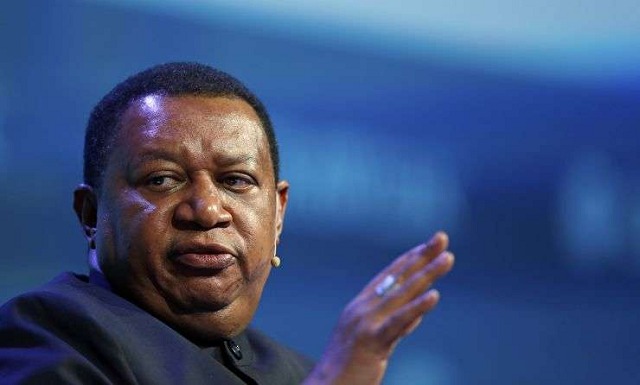The Secretary-General of the Organisation of Petroleum Exporting Countries (OPEC), Dr. Mohammad Barkindo, has disclosed that trade relations between member countries and China have continued to blossom over the last 18 years.
Barkindo, in his remarks at the recent OPEC-China Energy Dialogue, explained that whilst OPEC’s export to China in 2000 was merely valued at $5.5 billion, it, however, rose to $104 billion in 2018, just the same way OPEC’s imports from China rose from $8.3 billion to $176 billion within the same period.
OPEC member countries include Nigeria, which also has a stable trade with China even in oil and gas.
“China is a very important trade partner for OPEC and our member states, one whose significance has grown over time. Additionally, China’s leadership and critical role in the global economy and the energy industry cannot be understated.
“The trade numbers, for example, tell the story. OPEC exports to China have risen from over $5.5 billion in 2000 to over $104 billion in 2018. Meanwhile, OPEC imports from China have also drastically jumped from $8.3 billion in 2000 to nearly $176 billion in 2018.
“This represents massive growth in overall trade between China and our member countries,” said Barkindo.
According to him, the global economy was expected to more than double from 2017 to 2040, with China maintaining a significant role in this.
He said while China accounted for 18 percent of global Gross Domestic Product (GDP) in 2017, this was however projected to rise by a whopping six percentage points to reach 24 percent by 2040.
Barkindo also said the world oil demand was expected to rise from 97.2 million barrels per day (mbd) in 2017 to 111.7mbd in 2040, with China accounting for nearly 30 percent of that growth.
China’s demand for oil, he noted is equally expected to rise from 12.3mbd in 2017 to 17.4mbd in 2040, or by 5.1mbd.
“This great country became the world’s biggest importer of crude oil in 2017, overtaking the US. In 2018, over 62 per cent of OPEC crude exports went to the Asia Pacific region, with the majority headed for China. So, as you can see, there are crucial ties between OPEC member countries and China which are critical for both of us.
“The percentage of oil in China’s fuel share is also expected to rise, going from 18 per cent in 2015 to 19.5 per cent in 2040, according to our WOO 2018. This means that although China has been making great leaps and bounds in the field of renewables, the need for oil will continue to grow significantly,” said Barkindo.
He stated that the share of renewables and nuclear energy in China’s energy pie will also rise dramatically in that time, with nuclear energy going from 1.5 percent in 2015 to 7.4 percent in 2040, and other renewables, including solar and wind, up from 1.6 to 6.4 percent. Natural gas use, he added will also more than double to 11.3 percent.
“What is clear is that all sources of energy are going to be required to meet China’s growing future needs, as you clearly elaborated during our joint meeting.
“This is confirmed by figures on China’s expected increase in per capita energy consumption over this time frame, which is expected to rise significantly from 16 barrels of oil equivalent to over 21 barrels of oil equivalent.
“In the medium term, structural changes in the Chinese economy will affect oil demand, specifically slowing it in some sectors, such as industry and energy. However, strong oil demand is set to continue in the road transportation and aviation sectors, as the country’s expanding middle class gives rise to mobility needs, despite growth in the sale of alternative vehicles.
“China’s vehicle stock levels are expected to rise more than twice as fast as the rest of the world from 2017 to 2040 at 4.3 per cent per annum. Although the share of electrical vehicles in overall vehicle stocks will rise significantly, it comes from a low base, and internal combustion engines will by far continue to dominate,” he added.
Source: THISDAY











